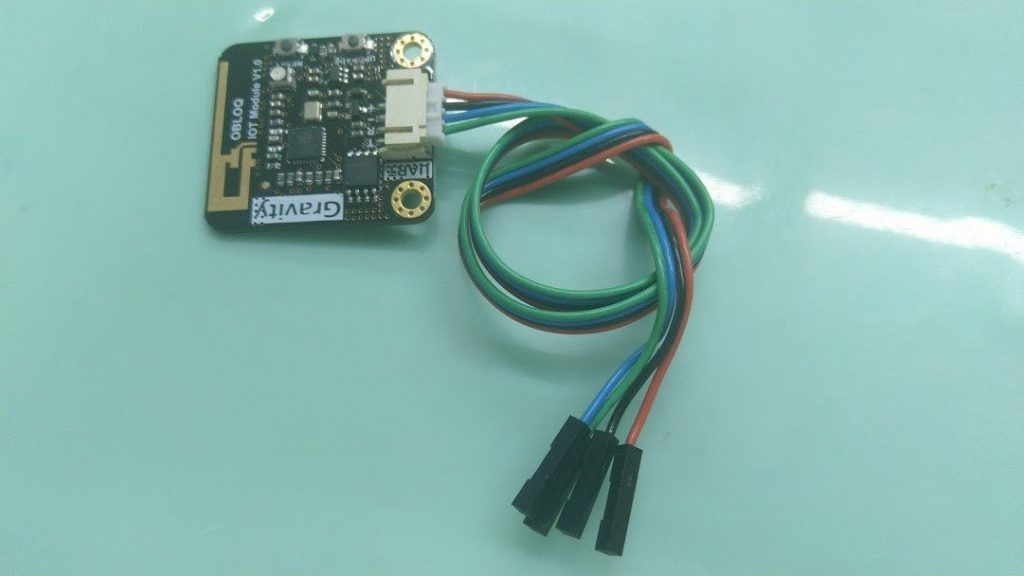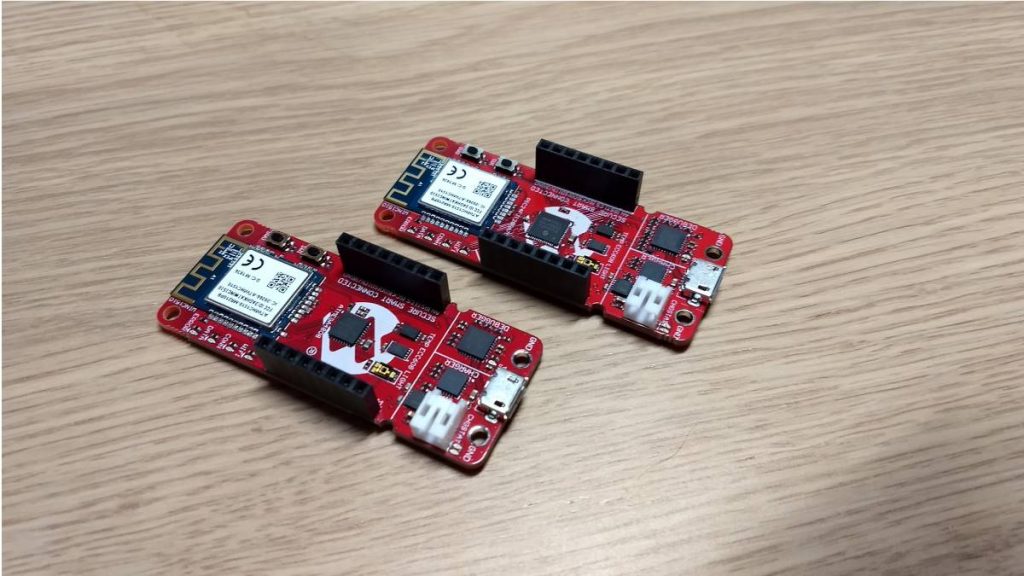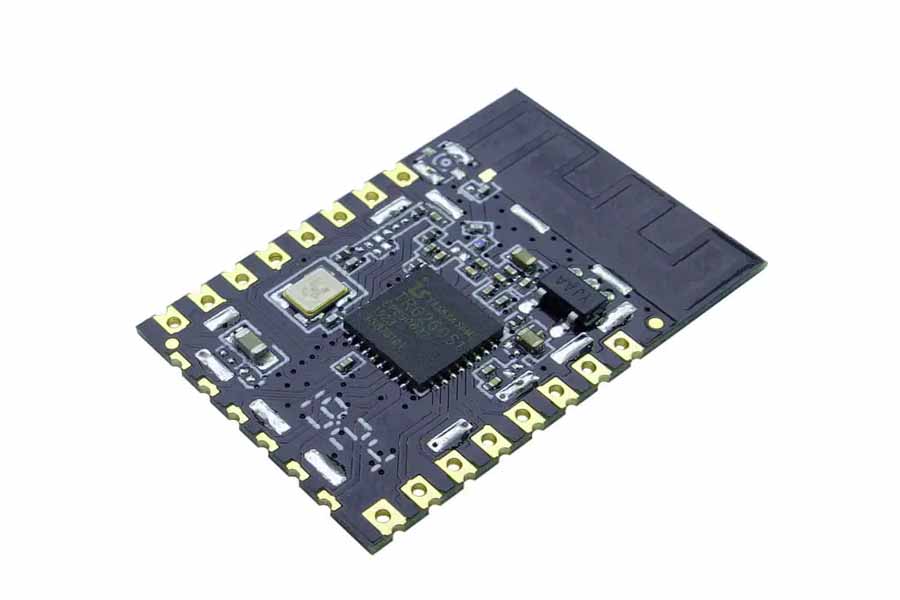The devices that connect to the IoT (internet of things) are growing in numbers each year. There are multiple factors behind the rise of such devices, including the so much use of wireless devices at workplaces and consumer homes. Consumers are expecting more of their wireless devices and the prices of wireless connectivity are falling because of so many brands in competition. Connectivity is fundamental to the adoption of IoT, specifically WiFi chips and modules. Therefore, it is essential to know the most suitable IoT WiFi module when you are developing an IoT project.
Our today’s article will highlight the important considerations you need to follow when deciding about an IoT wireless module.

For IoT, WiFi modules fall into a couple of categories. The first one is the “single” solution in which the MCU turns the wireless stock, while the host app is in a chip.
The other category includes a WiFi + host processor module solution in which the WiFi connection solution holds the wireless stack, while an independent processor turns the WiFi host application. We will share more information about these categories below. However, we will focus mainly on the WiFi + host processor module category because it is the most common architecture for IoT projects in a commercial area.
The second category of IoT WiFi module comprises a couple of hardware parts, such as WiFi SoC (system-on-chip), and the app host processor. The subsystem of wireless SoC includes an RF connector or integrated antenna, a radio-physical 802.11 layer, crypto engines MAC layer for security, and the baseband. The app host processor comprises external or internal flash, RAM, and ROM. Generally, a module comes with several I/O’s, like timers, crystal oscillators, interfaces of serial communication, DACs, ADCs, and more to support an array of applications.
Moreover, the subsystem of power management allows low-power modes, like RTC mode hibernating as well as DC-DC integrated converters. It ensures support for various power supplies. Usually, IoT wireless modules encompass 802.11 integrated security layer device drivers, and a monitoring and management utility.
IoT wireless modules are great as they simplify the process of connectivity design. While we can fit a wireless chip to a device that doesn’t have a pre-installed chip, designers face the difficult task of designing a customized implementation that is normally not inside of many embedded device manufacturers’ scope.
Moreover, most WiFi modules are certified, tested, and calibrated by relevant authorities, including EMC (EU) and FCC (USA). Therefore, they offer a straightforward solution that reduces the requirement for customized hardware development. Ultimately, it allows for a go-to-market, fast solution.
Usually, manufacturers list WiFi modules by several parameters, including data rate, RF band, certification, and range, etc. So, it is significant to conduct your IoT WiFi module search according to those parameters that fulfill the needed application specifications. Below are a few significant parameters to consider while selecting the right IoT wireless modules for a project.
It is important to choose the right option between the “WiFi module + host processor” and “single” solution. As we already said that there are two types of solutions available. Let’s take a quick look at those solutions for a better understanding.
In the “single” solution, the MCU IoT runs the wireless stacks whereas hosts the application in a single chip. This configuration is the perfect configuration for an embedded device where the size of the physical layout is the foremost priority.
It is because it eliminates many external parts that are all integrated. It is possible to share the components in the WiFi MCU configuration, which results in fewer components. This helps in simplifying the layout considerations and PCB routing.
When it comes to the software, this is a perfect configuration for the RF small-to-medium protocol stacks where it is possible to evenly allocate the memory between the top-layer and physical layer application.
These advantages assist in minimizing the space of the physical board and the BOM (bill-of-materials) to fit cost-optimized and size-constrained IoT applications. Some IoT WiFi module models like SAMW25, CC3200, and ESP32 are perfectly suitable for this IoT architecture type. Smart security and remote monitoring systems, wearable monitoring, and asset tracking are a few examples of IoT applications based on it.
It is the second type of solution in which the WiFi connectivity solution comprises an independent processor to the run host app and a WiFi stack. It’s a perfect architecture for fully matured and well-defined wireless technology that doesn’t change often.
It permits for minimal MCU wireless overhead and makes code development simple. It’s possible because a developer can depend on a packaged wireless stack. The WiFi stack separation and app layer permit the MCU for investing max bandwidth and hardware resources on an IoT application.
Wireless modules, like CC3100 and ESP8266, are appropriate for this IoT architecture type. Applications, such as smart energy devices, smart appliances, and home automation are some examples that utilize this architecture type.
IEEE 802.11 denotes the wireless local area network standards’ family that mostly works in unlicensed bands of frequency. Today, we have numerous standards, such as 802.11 a/b/g/j/n/p/ac/ad/ah and all standards have unique specification requirements.
We have three factors to look at when choosing these protocols; power requirements, data rate, and range. Protocols, such as 802.11ah, and 802.11n comes with the benefit of higher IoT multimedia apps data rate.
Alternatively, we have the 802.11b/g protocol that offers a power requirements advantage. Therefore, the most appropriate IoT WiFi module, according to project requirements, relies on the uses and requirements of specific IoT applications.
The IEEE-802.11 standards work in diverse frequency ranges, divided into various channels. Different regions have different regulations and rules for determining users, maximum levels of power, and allowable channels within such frequency ranges.
Today, we have several wireless modules, such as RS9113-N00-DOC-X68, and CC3235MOD that offer dual-band support for 2.4GHz and 5GHz. They offer flexibility in the management and deployment of IoT devices.
Internet data transmission security today is one of the biggest challenges for every user and organization. Therefore, before we allow an IoT device to link with a WiFi network, we must ensure that the Wi-Fi supports the essential security standards. It is important to know that all IoT WiFi module modelsoffer support for a minimum of one of the Wireless security standards, such as WPA3, WPA2, WPA, and WPS, etc.
Every single security standard comes with its unique benefits as well as downsides. Therefore, it becomes essential to understand which wireless module is perfect according to your security requirements. You should learn about all security standards to identify which module offers security just according to your specific needs. Moreover, it is also vital to know the possible drawbacks so that you can make an informed decision.
Normally, we get wireless modules with several peripheral interfaces and I/Os support. It is because WiFi modules have to meet the diverse needs of the customers. The most common interfaces include SDIO, SPI, and the USB that provide high data support for throughput applications.
Else, we also have some typical interfaces including I2S, I2C, UART, and others. You must be clear about which hardware interface suits your IoT wireless module project. You can also take assistance from an expert if you are not sure which hardware interface is appropriate for your project.
Countries across the globe have specific regulatory certifications. It means that the IoT devices can’t enter the market until they hold a regulatory certification from the regulatory bodies. The product manufacturers must meet those regulations if they want to market their product to the end-users.

Therefore, it is necessary for all commercial applications to choose wireless modules with RF certifications from the authorities, like the FCC. As a user, you must check the IoT WiFi module certification before you buy it for your IoT project.
Otherwise, you may end up buying a low-quality module that would never provide the optimum results. In fact, your project may turn into a dead investment if you don’t choose a high-quality, certified WiFi module.
We have a selection of wireless IoT modules available in the market from many manufacturers or brands. Every single WiFi module has its strengths and weaknesses and is suitable for different types of applications.
Therefore, it holds immense importance to deeply study the characteristics of every single module before you make your final decision. However, so many options to choose from may turn the selection process a bit overwhelming. To make this selection process hassle-free, we have shortlisted a few popular WiFi modules that you can consider for your IoT project.
Here are some of the most reliable WiFi modules that you can count on for your project:
The Skylab LCS6260 is a single-stream, small form-factor 802.11b/g/n wireless module that comes with an onboard low-power processor. It is one of the most affordable and reliable IoT WiFi module models available in the market that supports WiFi-Ethernet-UART data transmission.
It is a perfect module for various home applications, home automation, smart grid, and enterprise projects. You can count on this module if you need a perfect low-power automation solution with higher efficiency.
You can use this module to design various applications utilizing communication protocols 802.11b/g/n. This module, with its built-in antenna, interface port, and outer antenna connector, enhances all features. It includes UART ports, GPIO ports, and power supply pins.
Module Features
The features of Skylab LCS6260 are as follow:
Skylab LCS6260 is a lead-free, RoHS compliant IoT wireless module that you can use for various applications. Some of its applications include IoT, metering, home automation, smart lighting, building automation, sensor network, mesh network, and industry control, etc.

It is another low-power IoT WiFi module that you can count on for its high efficiency and reliability. It has a low-power, onboard application processor and supports UART-Ethernet-WiFi data transmission.
This module is ideal for smart grid, enterprise, home automation & control, and other home applications. It allows for quick app development of the ultralow-power devices. If you need a WiFi module for low-power sensor and automation solutions with higher efficiency, this model can be the right choice.
You can design applications with communication protocols 802.11/b/g/n using the Skylab WG219 module. There is an exterior antenna connector, interface port, and built-in antenna to enhance all features of the device. Moreover, it comes with GPIO ports, UART ports, and power supply pins.
Module Features
The WG219 wireless module comes with the following features:
Skylab WG219 IoT WiFi module has lead-free compliance with RoHS, CE, and FCC. It provides a perfect solution for IoT, building automation, metering, home automation, smart lighting, baby monitors, industry control, sensor network, and mesh network.
The above-discussed wireless modules are the most reliable and economical WiFi modules you can choose for various applications, including IoT. You can go through their complete details and technical specifications to know which one is the most appropriate choice for your project.

There is an assortment of WiFi modules available for IoT projects from numerous manufacturers. To choose the most ideal wireless module for your project, you should first know the specific requirements of your project.
Once you know your project requirements, you can compare the complete specifications of the available modules to identify the best possible option. The key factors that affect your buying decision include hardware interfaces, operating frequency, wireless protocol support, IoT structure, security, and certification.
In order to learn more, reach out to us today!
Copyrights© Shenzhen Skylab Co.,LTD All Rights Reserved.

